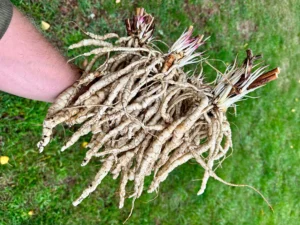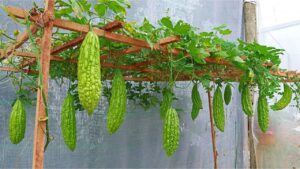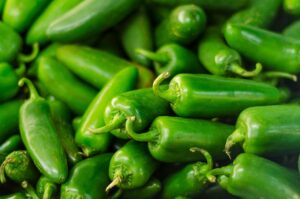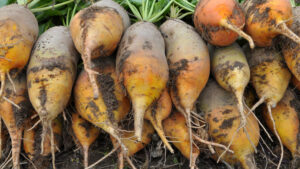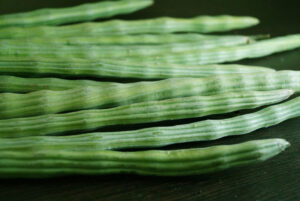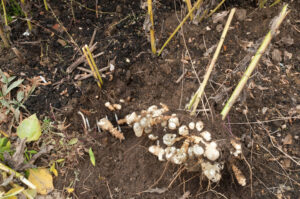How to Grow and Use Culinary Paprika: A Complete Guide
Are you looking to add a vibrant splash of color and rich flavor to your homegrown spice collection? Paprika peppers might be the perfect addition to your garden. Whether you have sprawling garden beds, a modest patio with containers, or just a sunny windowsill, you can successfully grow these versatile peppers and create your own homemade paprika powder.
What Is Paprika?
Paprika is both the name of the spice and the pepper varieties used to make it. These peppers (Capsicum annuum) are milder than many other varieties, with sweet and smoky notes rather than intense heat. In the United States, paprika peppers have been gaining popularity among home gardeners and culinary enthusiasts alike, with the US market for specialty peppers expanding by 15% annually according to recent USDA reports.
Choosing the Right Paprika Pepper Varieties
Before you begin growing paprika, you’ll need to select the variety that best suits your taste preferences and growing conditions. According to the USDA Agricultural Research Service, several varieties perform well in US growing conditions.
Popular Paprika Pepper Varieties:
- Alma Paprika: A sweet Hungarian variety that ripens from cream to red and produces thick-walled fruits ideal for grinding into powder.
- Leutschauer Paprika: An heirloom variety that produces medium-sized, slightly elongated red peppers with excellent flavor.
- Boldog Hungarian Spice: This semi-hot paprika variety is perfect if you want to make a slightly spicier powder.
- Kalosca: A traditional Hungarian variety used to make authentic Hungarian paprika powder.
- Spanish Pimento Paprika: Milder and sweeter, these heart-shaped peppers are popular for making Spanish-style paprika.
When and Where to Plant Paprika Peppers
Timing and location are crucial factors for successful paprika pepper cultivation.

Growing Zones and Timing
Paprika peppers thrive in USDA hardiness zones 5-12 but perform best in zones 7-10. As warm-season crops, they require:
- Soil temperatures of at least 65°F (18°C) for germination
- Consistent temperatures between 70-85°F (21-29°C) for optimal growth
- Protection from frost and cold temperatures
Planting Schedule by Region:
| Region | Indoor Seed Starting | Transplanting Outdoors | Direct Sowing Outdoors |
|---|---|---|---|
| Northeast | 8-10 weeks before last frost | 2-3 weeks after last frost | Not recommended |
| Southeast | 6-8 weeks before last frost | 1-2 weeks after last frost | After soil warms (May) |
| Midwest | 8-10 weeks before last frost | 2-3 weeks after last frost | Not recommended |
| Southwest | 6-8 weeks before last frost | After last frost | After soil warms (April) |
| West Coast | 6-8 weeks before last frost | After last frost | After soil warms (April-May) |
Growing Paprika from Seeds
Starting paprika peppers from seeds allows you to choose from a wider variety of options compared to buying transplants.
Starting Seeds Indoors
For most regions in the US, starting seeds indoors is the recommended approach:
- Begin 8-10 weeks before your last frost date. Check the USDA Plant Hardiness Zone Map to determine your local frost dates.
- Use seed-starting mix in clean containers with drainage holes. Biodegradable pots work well as they can be planted directly into the ground later.
- Plant seeds 1/4 inch deep and keep the soil consistently moist but not waterlogged.
- Maintain temperatures between 75-85°F (24-29°C) for optimal germination. Using a heat mat can help maintain consistent soil temperature.
- Provide 14-16 hours of light daily once seeds germinate. A sunny window may not provide enough light, so consider using grow lights positioned 2-3 inches above the seedlings.
- Thin seedlings once they develop their first true leaves, keeping the strongest plants.
- Begin hardening off seedlings 7-10 days before transplanting by gradually exposing them to outdoor conditions.
Direct Sowing Outdoors
In warmer regions with longer growing seasons (zones 8-12), you can directly sow paprika seeds outdoors:
- Wait until soil temperatures reach at least 70°F (21°C) and all danger of frost has passed.
- Prepare garden beds with compost and well-rotted manure.
- Sow seeds 1/4 inch deep and 18-24 inches apart in rows spaced 24-36 inches apart.
- Keep soil consistently moist until germination, which typically takes 7-14 days.
- Thin seedlings to 18-24 inches apart once they develop their first true leaves.
Growing Paprika in Garden Beds
Paprika peppers can be productive and attractive additions to your vegetable garden when given the right conditions.
Soil Preparation and Requirements
- Choose a location with full sun (at least 6-8 hours of direct sunlight daily).
- Prepare well-draining soil with a pH between 6.0-6.8. You can test your soil using a home kit or through your local extension office.
- Amend soil with compost or well-rotted manure to improve fertility and drainage.
- Consider raised beds in areas with heavy clay soil or poor drainage.
Planting and Spacing
- Space plants 18-24 inches apart in rows 24-36 inches apart to allow for good air circulation.
- Plant at the same depth as they were growing in their containers, or slightly deeper to support the stem.
- Water thoroughly after planting to help establish roots.
Ongoing Care in Garden Beds
- Water consistently, providing 1-2 inches of water weekly. Use drip irrigation or soaker hoses to keep foliage dry and prevent disease.
- Apply a 2-3 inch layer of mulch around plants to conserve moisture and suppress weeds.
- Fertilize with a balanced, organic fertilizer every 4-6 weeks, or use a diluted fish emulsion every 2-3 weeks.
- Support taller varieties with stakes or small tomato cages to prevent branches from breaking when loaded with peppers.
Growing Paprika in Containers
Container gardening is an excellent option if you have limited space, poor soil, or want to bring plants indoors during cold weather.
Choosing the Right Container
- Select containers at least 12-14 inches deep and 12 inches in diameter for each paprika plant.
- Ensure containers have adequate drainage holes to prevent waterlogging.
- Use fabric pots, clay, or plastic containers – each has advantages, but all can work well.
Potting Mix and Planting
- Use high-quality potting mix specifically formulated for vegetables, not garden soil.
- Mix in slow-release organic fertilizer before planting according to package directions.
- Plant one paprika pepper per 12-inch container, or up to three in a larger container with proper spacing.
Container Care Considerations
- Water more frequently than garden-grown plants as containers dry out faster. Check soil moisture daily during hot weather.
- Fertilize more regularly, typically every 2-3 weeks with a diluted liquid fertilizer high in phosphorus to encourage fruiting.
- Rotate containers periodically to ensure even light exposure.
- Consider mobility – place containers on plant caddies with wheels if you need to move them to follow the sun or protect from weather.
Growing Paprika Indoors
With the right conditions, you can grow paprika peppers indoors year-round, especially compact varieties.

Light Requirements
- Provide at least 12-14 hours of bright light daily. South or west-facing windows may provide enough natural light.
- Supplement with grow lights if natural light is insufficient. Position lights 6-12 inches above plants.
- Use full-spectrum LED grow lights for best results and energy efficiency.
Environmental Considerations
- Maintain temperatures between 70-80°F (21-27°C) during the day and no lower than 65°F (18°C) at night.
- Increase humidity around plants by using a humidifier, grouping plants together, or placing containers on trays filled with pebbles and water.
- Ensure good air circulation with a small fan to prevent disease and strengthen stems.
Pollination
Indoor paprika plants need help with pollination:
- Gently shake flowering plants every few days to distribute pollen.
- Use a small paintbrush to transfer pollen between flowers.
- Consider an oscillating fan to mimic outdoor breezes and aid pollination.
Common Challenges and Solutions
Even experienced gardeners face challenges when growing paprika peppers. Here are some common issues and how to address them:
Pests
- Aphids: Control with insecticidal soap or a strong spray of water.
- Spider mites: Increase humidity and treat with neem oil.
- Pepper weevils: Remove affected fruits and use row covers early in the season.
Diseases
- Bacterial spot: Improve air circulation, avoid overhead watering, and rotate crops.
- Powdery mildew: Increase air circulation and treat with a baking soda spray (1 tablespoon in 1 gallon of water with a few drops of dish soap).
- Blossom end rot: Maintain consistent watering and add calcium to the soil if needed.
Harvesting Paprika Peppers
Timing your harvest correctly ensures the best flavor and color for your homemade paprika.
When to Harvest
- For fresh use, harvest peppers when they’ve reached full size and desired color (usually bright red).
- For drying and making paprika powder, allow peppers to fully ripen on the plant until completely red and slightly wrinkled.
- Harvest before first frost in colder regions, as freezing temperatures will damage fruits.
How to Harvest
- Use clean, sharp scissors or pruning shears to cut peppers, leaving a small piece of stem attached.
- Handle carefully to avoid bruising.
- Harvest regularly to encourage continued production.
Making Your Own Paprika Powder
Creating your own paprika powder is rewarding and allows you to customize the flavor profile.
Drying Methods
- Air drying: String peppers together and hang in a warm, dry location with good air circulation for 3-4 weeks.
- Food dehydrator: Slice peppers in half, remove seeds (for milder paprika), and dry at 125-135°F (52-57°C) until completely brittle.
- Oven drying: Arrange sliced peppers on baking sheets and dry at the lowest setting (usually around 150°F/65°C) with the door slightly ajar, checking frequently.
Creating Paprika Powder
- Remove stems and seeds (if you want milder paprika).
- Grind dried peppers using a spice grinder, coffee grinder, or high-powered blender until you achieve a fine powder.
- Sift the powder through a fine-mesh strainer to remove any larger pieces.
- Store in airtight containers away from light and heat for up to one year.

Culinary Uses for Homegrown Paprika
Your homemade paprika will have fresher flavor and more vibrant color than store-bought versions.
Cooking with Paprika
- Use as a garnish for deviled eggs, potato salad, or hummus.
- Add to rubs and marinades for meat, poultry, and fish.
- Incorporate into soups and stews like goulash or Spanish-style dishes.
- Blend with other spices for custom seasoning mixes.
- Mix with olive oil to create a vibrant, flavorful drizzle for finished dishes.
Saving Seeds for Next Season
Extend your paprika growing journey by saving seeds from your best plants:
- Select fully mature peppers from healthy, productive plants.
- Slice open peppers and remove seeds, spreading them on a paper towel to dry for 1-2 weeks.
- Store dried seeds in labeled paper envelopes or small jars in a cool, dry place.
- Keep seeds viable for up to three years if stored properly.
Conclusion
Growing paprika peppers and creating your own paprika powder is a fulfilling way to enhance your culinary creations with homegrown flavor. By following the guidelines in this article, you can successfully cultivate these colorful peppers in garden beds, containers, or even indoors. With proper care and attention, your paprika peppers will reward you with abundant harvests that can be transformed into vibrant, flavorful spice to enjoy year-round.
Whether you’re a seasoned gardener or just starting out, paprika peppers offer an accessible entry point into growing your own spices, adding both visual appeal to your garden and depth of flavor to your cooking. Start with just a few plants and expand your paprika garden as you gain confidence in your growing skills and discover the joy of creating truly fresh, homemade spices.

